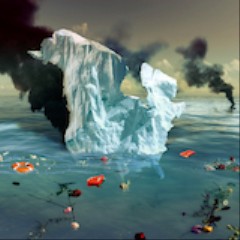Tipping Point covers environmental justice stories about and, where possible, written by people in the communities experiencing the stark reality of our changing planet.
Advertisement
“I was so scared that I didn’t even feel any pain,” said Leparleru, who is 26 now, but was just 23 at the time. It was there in the dry grasslands that she gave birth to a healthy baby boy. Some children, grazing their goats nearby, had seen Leparleru and raced back to the village for help. But it would still be more than two hours before anyone arrived; even when they did, she still had to walk the 10 kilometers back to Nkaroni on her own. “I just used these two legs you see here,” she told me. In northern Kenya, the already deadly dry season is getting longer each year, driving women farther and farther in search of water and firewood. Leparleru’s story is harrowing, but it’s also common. Compared to many pastoralist women, she was lucky. Collins Otieno, a project officer with the Pan African Climate Justice Alliance, a consortium of organizations across 48 African countries, said that instances of women dying while collecting water and firewood aren’t even officially recorded. “It’s become so normal that no one even takes count,” he said. “The fact that they are marginalized, they are pastoral, and they’re Indigenous, no one cares what happens to them. No one at all.”
A woman washing dishes with one of the jerrycans she uses to carry water. Photo courtesy of the BOMA Project
During the dry season in Nkaroni, which spans roughly June to October and December to March, the problem of water is never far from anyone’s mind, since little is possible without it.
Advertisement
Water is necessary for cooking, cleaning, and bathing. It is necessary for livestock to drink, but also to grow the pastures the animals use to graze. Without food and water, the animals die. The tribes whose lives for centuries revolved around their livestock can find themselves, suddenly, with nothing. “Those who have a lot of livestock can even go to zero just because of a drought,” said Nacha Longonyo, who lives in the same village as Leparleru. “It’s devastating.” While lack of water is a problem for everyone, women bear the brunt of the burden. “Most of the public health community is thinking about what’s in the water,” said Sera Young, an anthropology professor at Northwestern University. “It’s easy to forget how dangerous it is to actually just go and acquire the water.” In the dry season, women regularly walk up to 20 kilometers to the nearest water source, a journey that exposes them to any number of dangers, from territorial elephants to aggressive men. Once they arrive, they can wait hours for the chance to fill their jerrycans; often, fights break out, said Young. The journey back is even worse, since the same threats remain, but now with the addition of 40 pounds of water they have to carry. The frequency of these trips varies by the season and each household’s needs, but in some cases, women may make it multiple times per day.
Advertisement
Hauling so much weight while pregnant has been shown to have several adverse effects. A 2018 study from western Kenya, co-authored by Young, found that women attributed early delivery, stillbirth, and miscarriage to the physical exertion that fetching water requires. On top of that, nearly half of the 18 women included in the study experienced some form of domestic violence as a result of insufficient water. Given the incredible physical and emotional strain tied to collecting water, it’s no wonder that it also takes a toll on women’s mental health. “I will lose sleep in the middle of the night just having to think about it,” Nacha said. “There is so much that comes with the drought. There is so much suffering.” The question of whether climate change is a contributing factor seems ridiculous in places like Nkaroni, where each woman I spoke with said it was undeniable that water was becoming more scarce. The evidence isn’t just anecdotal, either. The country’s Red Cross reported that the drought spanning 2016 through 2018 affected up to 3.5 million people in Kenya’s arid and semi-arid counties, with nearly a million facing starvation. The job of collecting water may fall on women, but that doesn’t mean they have a hand in making decisions about how to cope with the droughts. “The space that they (women) occupy in the community is in the house,’’ said Otieno. “Especially in pastoral communities, women are people to be seen, not to be heard.” This means that when it comes to finding solutions to addressing water scarcity, like land use, women are often left out of the conversation altogether.
Advertisement
Including women in climate and land use discussions will go a long way toward equalizing the incredible hardships the droughts cause, said Otieno. But the best solution, in the long run, would be for major industrialized nations—namely China, the U.S., and India—to slow the polluting activities that are causing the climate to change in the first place. “The problem of water is pretty invisible to those consuming the most,” said Young. “It seems like it’s a problem somewhere else.” What’s happening in northern Kenya isn’t an aberration—it’s a preview. Scientists predict that within just 50 years, many regions of the U.S. could see their fresh water supply drop by a third. As many as 96 out of 204 basins expected to have shortages, the effects of which will be felt around most parts of the country. “These same problems that are being seen in northern Kenya will soon be coming to roost here,” said Young. “I cannot emphasize how scary it is to think of a life without water.” Lauren Evans is a freelance journalist whose work focuses on science, the environment, and human rights. Follow her on Twitter. Have a story for Tipping Point? Email TippingPoint@vice.com

